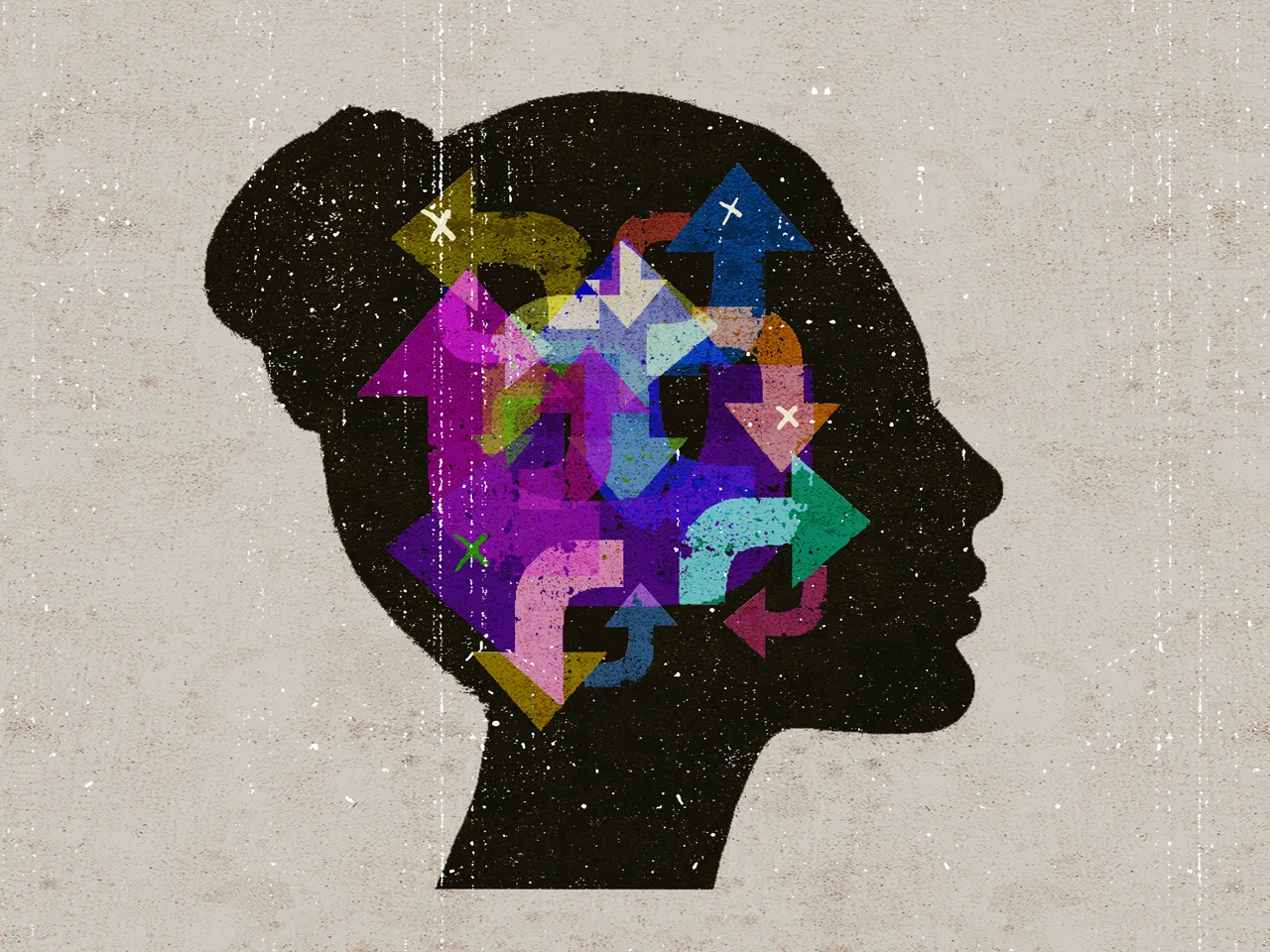Contents
Introduction

Humanistic Therapy: Techniques, Applications, and Effectiveness
Humanistic Therapy is a therapeutic approach that focuses on the individual’s capacity for self-awareness, personal growth, and self-actualization. It emphasizes the importance of the client’s subjective experience and their ability to make choices that lead to personal fulfillment. Unlike approaches that may focus on pathology or dysfunction, Humanistic Therapy seeks to understand and support the individual’s intrinsic potential for growth and self-improvement. This approach integrates principles from existentialism, phenomenology, and humanistic psychology to provide a holistic and client-centered form of therapy.
This article provides an overview of Humanistic Therapy, including its core principles, techniques, and applications in treating various mental health conditions. We will also discuss the criticisms and limitations of this approach and its relevance and effectiveness as a therapeutic option today.
What is Humanistic Therapy?
Humanistic therapy, based on humanistic psychology, focuses on nurturing the whole person and emphasizes their potential for achieving personal growth and fulfillment. This approach values understanding the individual’s unique experiences and well-being rather than just focusing on symptoms or disorders Pioneered by key figures such as Carl Rogers, Abraham Maslow, and Fritz Perls, Humanistic Therapy encourages clients to explore their inner experiences and emotions deeply. Techniques such as active listening, empathy, and reflective feedback are often used to help clients become more aware of their true selves, fostering personal growth and self-acceptance. Humanistic therapy often incorporates principles like unconditional positive regard, where the therapist provides non-judgmental and compassionate support, helping clients feel safe to express themselves honestly.
Why Humanistic Therapy is Important?
Humanistic therapy is important because it helping individuals reach their fullest potential and live more authentic lives. Unlike therapies that focus solely on treating specific symptoms or disorders, humanistic therapy prioritizes understanding a person’s unique experiences, emotions, and perspectives. It creates a safe, non-judgmental, and empathetic environment where clients feel supported in exploring their true selves, identifying their values, and making choices that align with their genuine desires. By fostering empathy, unconditional positive regard, and a deep sense of connection, humanistic therapy not only enhances self-esteem and self-worth but also improves emotional well-being, resilience, and the ability to build healthier, more meaningful relationships.
Types of Humanistic Therapy Techniques
- Client-Centered Therapy: Developed by Carl Rogers, this technique emphasizes creating a supportive and empathetic therapeutic relationship where clients feel valued and understood. The therapist provides unconditional positive regard, empathy, and genuineness to facilitate self-exploration and growth.
- Gestalt Therapy: Founded by Fritz Perls, Gestalt Therapy focuses on helping clients become more aware of their present experiences and emotions. It uses techniques such as role-playing, empty-chair work, and guided imagery to enhance self-awareness and integrate fragmented parts of the self.
- Existential Therapy: This approach, which overlaps with Humanistic Therapy, explores fundamental aspects of human existence, such as meaning, freedom, and mortality. It helps clients confront existential concerns and find purpose and authenticity in their lives.
- Self-Actualization: Humanistic Therapy encourages clients to pursue self-actualization, which involves realizing one’s full potential and achieving personal growth. This may involve exploring personal values, goals, and aspirations to create a more fulfilling life.
- Transactional Analysis: Transactional Analysis (TA) is a psychotherapeutic approach that examines interactions or “transactions” between individuals to understand and improve communication and relationships. TA is based on the idea that each person has three ego states—Parent, Adult, and Child—that influence their behavior and interactions
Understanding How Humanistic Therapy Works
Humanistic Therapy works by fostering a therapeutic relationship that supports and empowers clients to explore their inner experiences and emotions. The therapy emphasizes self-awareness, personal growth, and the pursuit of self-actualization. By creating a safe and accepting environment, clients can freely explore their feelings, values, and goals. The therapist’s role is to provide empathy, unconditional positive regard, and genuineness, facilitating the client’s journey toward personal fulfillment and self-realization.
This examination will unfold in three stages: we will first outline the core principles of Humanistic Therapy, then delve into its central therapeutic strategies, and end by assessing its relevance to treating diverse psychological conditions.
Simple Overview
Core Idea: Humanistic Therapy is based on the belief that every person has the capacity for self-awareness and personal growth. It focuses on helping individuals understand their true selves, foster self-acceptance, and achieve their full potential. The therapy creates a supportive environment where clients can explore their emotions, values, and goals.
Real-Life Example: Consider someone struggling with low self-esteem and feeling disconnected from their true desires. In Humanistic Therapy, they might explore their personal values and aspirations with the therapist’s support. For instance, if they have always wanted to pursue a creative career but have held back due to fear of failure, therapy would help them examine and address these fears, ultimately supporting them in taking steps toward their goals.
Key Principles
- Self-Actualization: This refers to the process of realizing one’s full potential and achieving personal growth and fulfillment. It involves pursuing personal goals, embracing one’s abilities, and achieving a sense of self-fulfillment and purpose in life.
- Empathy and Unconditional Positive Regard: These are key elements of the therapeutic relationship that support self-exploration and growth. Empathy involves understanding the client’s experience from their perspective, while unconditional positive regard means accepting and valuing the client without judgment, fostering a safe environment for personal development.
In-Depth Evaluation
It aims to create a holistic therapeutic environment where individuals can explore their inner experiences and develop a deeper understanding of themselves. By addressing not only emotional and cognitive aspects but also existential concerns, Humanistic Therapy fosters an inclusive approach to personal development. This comprehensive method supports clients in achieving self-actualization and finding greater meaning and purpose in their lives.
- Emotional Foundations: Humanistic Therapy places a strong emphasis on exploring and understanding emotions to foster self-awareness and personal development. By focusing on emotional experiences, individuals gain insight into their inner world, which facilitates personal growth and enhances their ability to lead a more fulfilling and authentic life.
- Cognitive Foundations: Although Humanistic Therapy is not primarily cognitive, it involves examining personal values, beliefs, and goals to enhance self-understanding and fulfillment. This introspective process helps individuals clarify their personal vision and align their actions with their core values, contributing to a deeper sense of purpose and self-actualization.
- Existential and Experiential Processing: Humanistic Therapy addresses existential concerns, such as the search for meaning and purpose, through experiential techniques and self-exploration. This approach helps individuals confront and understand fundamental aspects of their existence, such as freedom, responsibility, and the nature of their personal experiences, facilitating meaningful personal growth and transformation.
Difference between Humanistic Theory and Humanistic Therapy
| Aspect | Humanistic Theory | Humanistic Therapy |
| Definition | A broad philosophical approach emphasizing human potential and self-actualization. | A therapeutic approach grounded in humanistic theory focusing on personal growth and self-understanding. |
| Focus | Theoretical exploration of human nature, potential, and self-actualization. | Practical application of theory to help individuals achieve personal growth and self-understanding. |
| Key Figures | Carl Rogers, Abraham Maslow, Rollo May | Carl Rogers (Person-Centered Therapy), Fritz Perls (Gestalt Therapy) |
| Main Concepts | Self-actualization, self-concept, personal growth, free will | Therapeutic relationship, empathy, unconditional positive regard, self-exploration |
| Goal | To understand and explain the inherent capabilities and motivations of humans. | To help clients explore and realize their own potential and achieve personal growth. |
| Application | Used to develop theories about human behavior and potential. | Used as a method in therapy to help individuals address personal issues and achieve personal development. |
| Methods | Conceptual and theoretical discussion, research, philosophical inquiry. | Therapeutic techniques such as active listening, empathy, and reflection. |
| Outcome | Provides a framework for understanding human behavior and motivation. | Aims for personal growth, improved self-awareness, and self-fulfillment in individuals. |

Notable Figures in Humanistic Therapy
- Carl Rogers: Founder of Client-Centered Therapy, Rogers emphasized the importance of empathy, unconditional positive regard, and genuineness in the therapeutic relationship. His approach focuses on creating a supportive environment where clients can explore and realize their true selves.
- Abraham Maslow: Known for his theory of self-actualization and the hierarchy of needs, Maslow highlighted the importance of fulfilling one’s potential. His model outlines a progression from basic needs to higher-level needs like self-actualization and personal growth.
- Fritz Perls: Founder of Gestalt Therapy, Perls focused on enhancing self-awareness and integrating fragmented parts of the self. His approach encourages clients to experience the present moment fully and address unresolved issues.
- Rollo May: An existential psychologist, May explored themes of meaning, freedom, and responsibility in relation to personal growth and self-actualization. His work emphasized the importance of confronting existential concerns to achieve a fulfilling life.
Applications of Humanistic Therapy in Treating Mental Health Disorders

Depression
Humanistic Therapy can be effective in treating depression by helping clients explore and address underlying emotional and existential concerns. By fostering self-awareness and personal growth, clients can develop a greater sense of meaning and fulfillment.
Example: A client experiencing depression might use Humanistic Therapy to explore their values and goals, ultimately finding new sources of meaning and motivation.
Image Source: health.harvard.edu

Anxiety Disorders
Humanistic Therapy helps individuals with anxiety disorders by addressing existential concerns related to freedom, responsibility, and meaning. The therapy promotes self-awareness and personal growth, which can alleviate anxiety symptoms.
Example: A person with anxiety might use Humanistic Therapy to explore their fears and uncertainties, leading to greater self-understanding and reduced anxiety.
Image Source: calmclinic.com

Personality Disorders
Humanistic Therapy can be beneficial for individuals with personality disorders by promoting self-awareness, self-acceptance, and personal growth. The therapy’s focus on authenticity and self-actualization can facilitate positive changes in personality and behavior.
Example: For someone with Borderline Personality Disorder, Humanistic Therapy might focus on enhancing self-awareness and self-acceptance, leading to improved emotional regulation and interpersonal relationships.
Image Source: self.com

Relationship Disorders
Humanistic Therapy is effective in addressing relationship issues by helping clients explore and resolve emotional and existential concerns related to their relationships. The therapy promotes communication, empathy, and personal growth.
Example: A couple experiencing relationship difficulties might use Humanistic Therapy to explore their values and goals, leading to improved communication and a deeper connection.
Image Source: sdrelationshipplace.com
Common Myths About Humanistic Therapy
| Myth | Reality |
| Humanistic Therapy is just about discussing feelings with no practical outcomes. | Humanistic Therapy involves exploring feelings and experiences, but it also focuses on achieving personal growth, self-actualization, and practical changes in the client’s life. |
| Humanistic Therapy is only suitable for people with specific disorders. | Humanistic Therapy can benefit a wide range of individuals, including those seeking personal growth, self-fulfillment, and improved well-being. |
| Humanistic Therapy is not evidence-based. | There is empirical support for the effectiveness of Humanistic Therapy, particularly in promoting self-awareness, personal growth, and overall well-being. |
| Humanistic Therapy is too idealistic and does not address real-life problems. | While Humanistic Therapy emphasizes personal growth and self-actualization, it also addresses real-life challenges and helps clients navigate their emotional and existential concerns. |
Criticisms and Limitations
- Lack of Structure: Humanistic Humanistic Therapy’s emphasis on personal exploration and self-actualization often involves less structured techniques compared to more directive approaches. This flexibility may be less suitable for clients who prefer clear, structured interventions and guidance.
- Abstract Nature: The focus on self-actualization and personal growth in Humanistic Therapy can sometimes be seen as abstract, potentially making it less practical for addressing specific symptoms or disorders. Critics argue that the therapy’s broad goals may not always directly address concrete psychological issues.
- Empirical Support: Although there is evidence supporting the effectiveness of Humanistic Therapy, it is sometimes criticized for lacking the empirical rigor seen in approaches like Cognitive Behavioral Therapy (CBT). The abstract nature of its concepts and techniques can make it challenging to measure and validate through scientific research.
Conclusion
Humanistic Therapy offers a compassionate and empowering approach to psychotherapy, emphasizing the individual’s capacity for self-awareness, personal growth, and self-actualization. By focusing on the whole person and fostering a supportive therapeutic relationship, Humanistic Therapy helps clients explore their emotions, values, and goals, leading to greater fulfillment and well-being. Despite some criticisms related to its abstract nature and lack of structure, Humanistic Therapy remains a valuable option for those seeking to enhance their personal growth and achieve a deeper sense of purpose in their lives.
References
- Rogers, C. R. (1951). Client-centered therapy: Its current practice, implications, and theory. Houghton Mifflin.
- Maslow, A. H. (1943). A theory of human motivation. Psychological Review, 50(4), 370–396.
- Perls, F., Hefferline, R. F., & Goodman, P. (1951). Gestalt therapy: Excitement and growth in the human personality. Julian Press.
- May, R. (1969). Love and will. W.W. Norton & Company.
- Satir, V. (1967). Conjoint family therapy. Science and Behavior Books.
- Schneider, K. J., & Krug, O. M. (2010). Existential-integrative psychotherapy: Guideposts to the core of practice. Springer.
- Greenberg, L. S. (2002). Emotion-focused therapy: Coaching clients to work through their feelings. American Psychological Association.
- Yalom, I. D. (2002). The gift of therapy: An open letter to a new generation of therapists and their patients. HarperCollins.
- Hoffman, L., & D. (2008). The practice of existential psychotherapy. Routledge.
- Viktor Frankl Institute. (n.d.). Logotherapy and existential analysis.
- Corey, G. (2016). Theory and practice of counseling and psychotherapy (10th ed.). Cengage Learning.
- Maslow, A. H. (1970). Motivation and personality (3rd ed.). Harper & Row.
- May, R. (1975). The courage to create. W.W. Norton & Company.
Explore more Theories & Therapies








